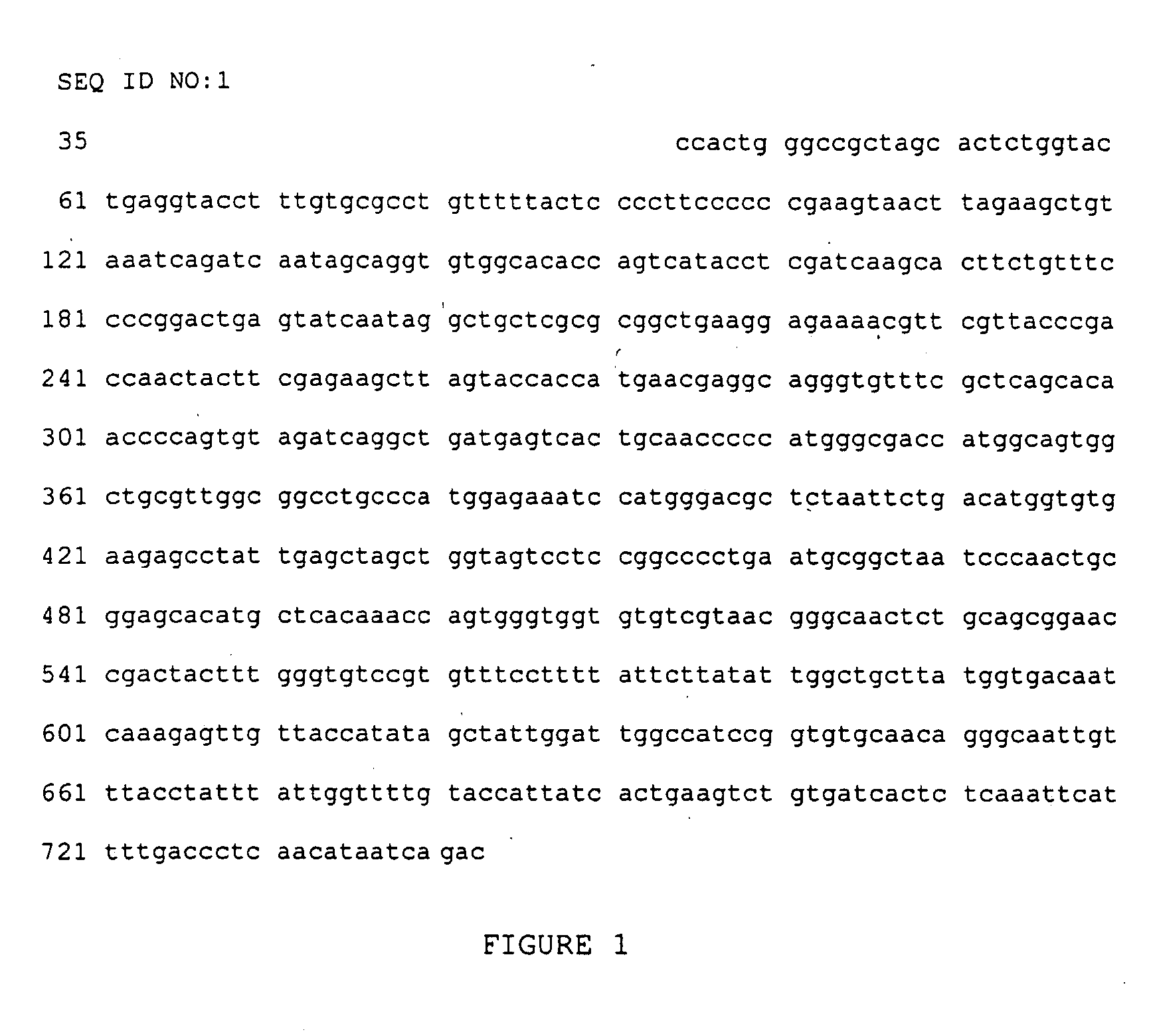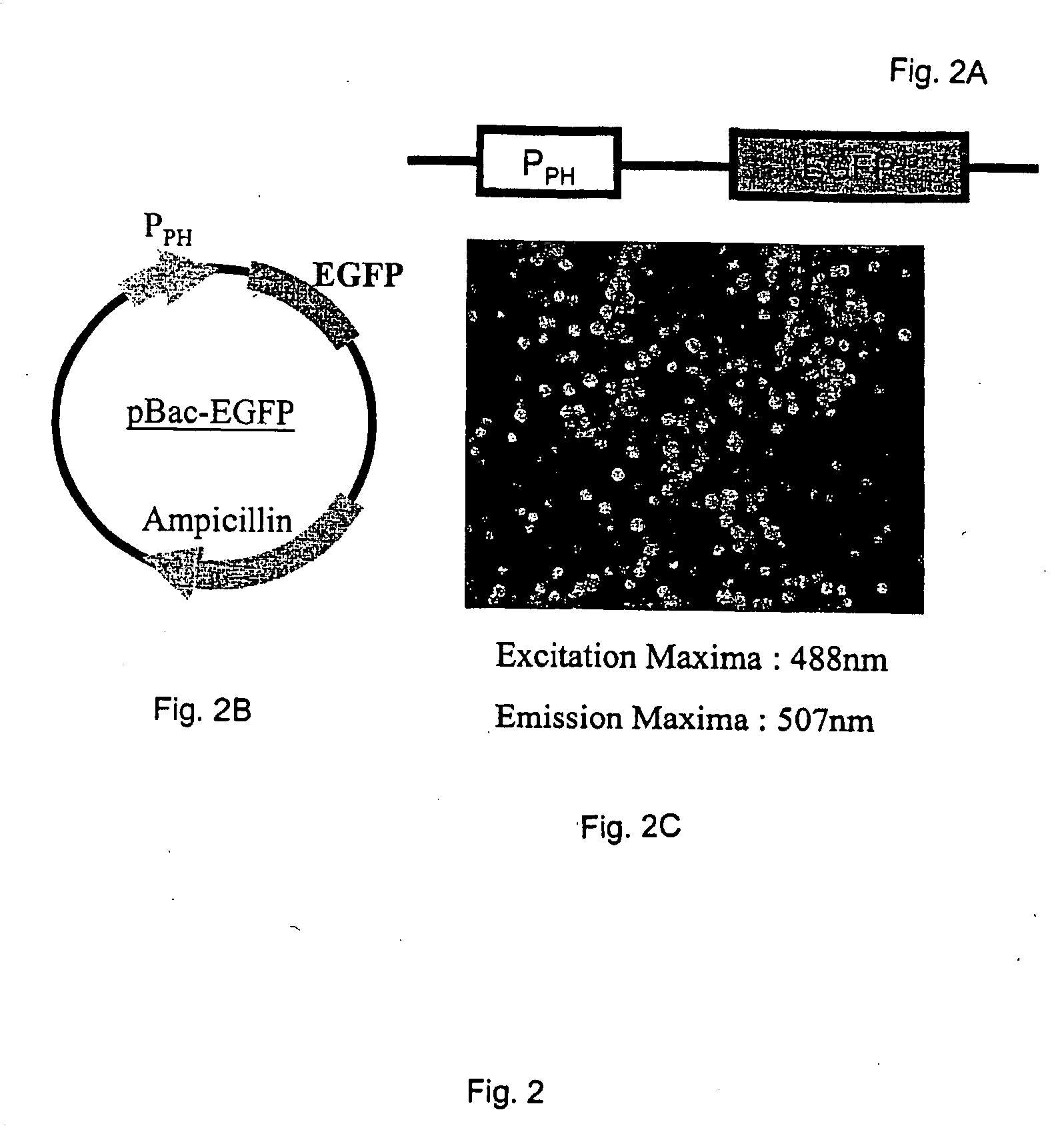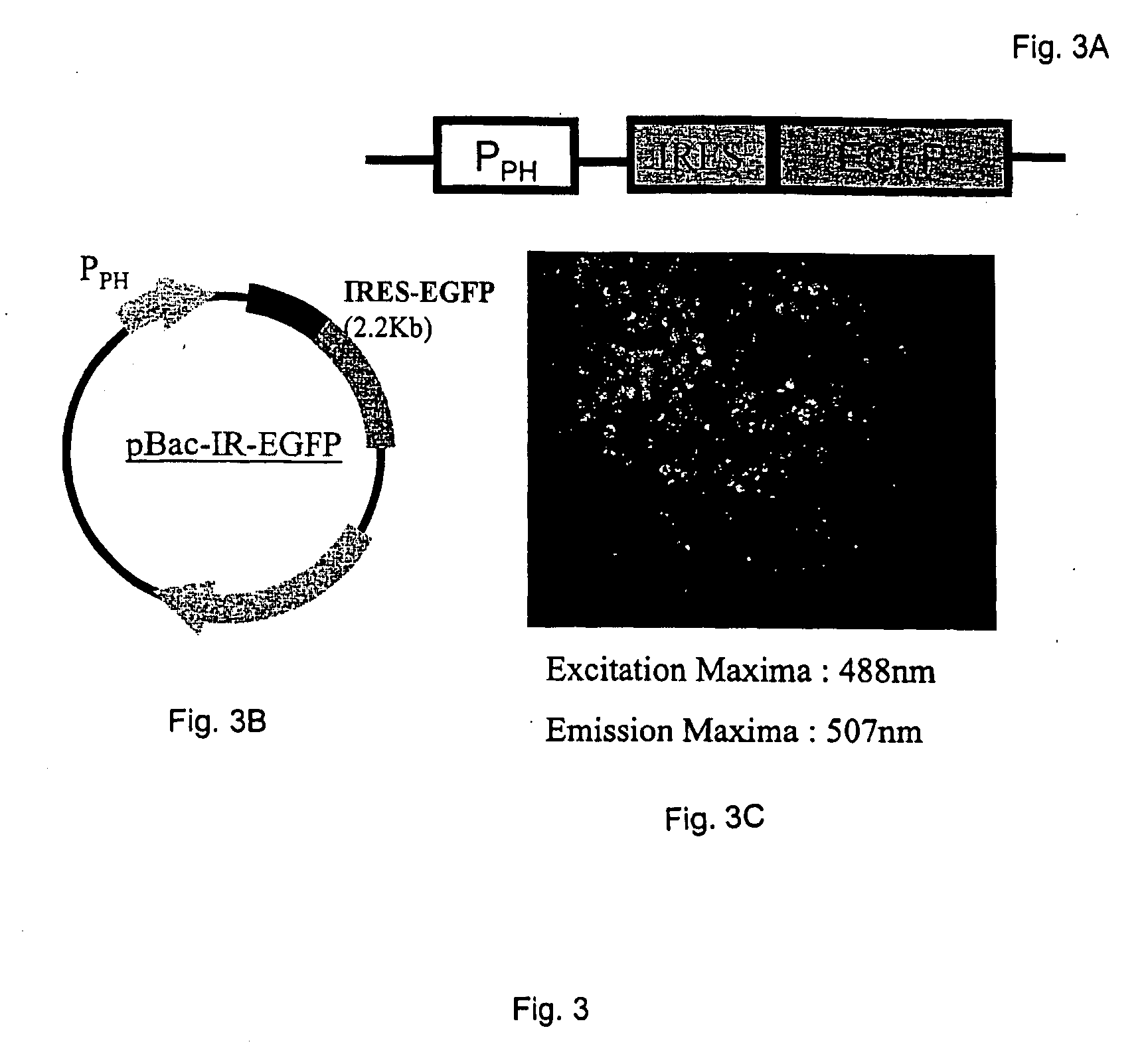Internal ribosome entry sites for recombinant protein expression
a ribosome entry site and recombinant protein technology, applied in the field of 5′ untranslated regions, can solve the problems of uncoupled expression of various proteins, and achieve the effect of constant ratio, efficient translation, and efficient translation
- Summary
- Abstract
- Description
- Claims
- Application Information
AI Technical Summary
Benefits of technology
Problems solved by technology
Method used
Image
Examples
example 1
[0062] The EMCV IRES has IRES Activity in Insect Cells
[0063] The EMCV IRES has been previously reported to be highly efficient in mammalian systems but inactive in insect cells (Finkelstein Y., et al., (1999) J. Biotech. 75:33-44). The inventors have surprisingly found that the EMCV IRES does function in insect cells.
[0064] A recombinant baculovirus expression system was used to test for EMCV IRES activity in insect cells. Baculovirus transfer vectors were created using pBlueBac4.5 (Invitrogen). The enhanced green fluorescent protein (EGFP) coding sequence was inserted into the multiple cloning site of pBlueBac4.5 and placed under the control of the baculovirus polyhedrin promoter (PPH). The resulting control vector was designated pBac-EGFP (FIGS. 2A and 2B). In another transfer vector, pBac-IR-EGFP, the EMCV IRES sequence (Jang, S. K., and E. Wimmer, (1990) Genes Dev. 4:1560-1572) was placed immediately in front of the EGFP coding sequence (FIGS. 3A and 3B). A bicistronic transfe...
example 2
[0066] The EV71, HCV, and EMCV IRESs are Active in a Wide Range of Cell Types
[0067] The EV71, HCV, and EMCV IRESs were analyzed for activity in various cell types, including insect cells (Sf9), mammalian cells (COS-7 and Huh7), and bacterial cells (BL21). The pTriEX-4 vector (Novagen) was used to generate bicistronic nucleic acid vectors for recombinant protein expression in all three cell types. The pTriEx-4 vector contains the cytomegalovirus (CMV) immediate early promoter, which is active in mammalian cells, the p10 promoter of the AcMNPV baculovirus, which is active in insect cells, and the T7 promoter from bacteriophage, which is active in bacterial cells. As depicted in FIG. 6, the β-galactosidase (β-gal) and secreted alkaline phosphatase (SEAP) genes were placed under the control of one of the three promoters present in pTriEX-4 for mRNA synthesis. The EV71 (FIG. 1), HCV (Tsukiyama-Kohara K., et al., (1992) J. Virol. 66:1476-1483), or EMCV IRES (Jang, S. K., and E. Wimmer, (...
example 3
[0072] Interferon-Alpha (IFN-α) Interferes with Cap-independent Translation from the EV71 and HCV IRES
[0073] Bicistronic nucleic acid vectors containing the EV71 and HCV IRESs were utilized to screen for anti-viral compounds that are capable of interfering with cap-independent translation from the viral IRESs. Anti-viral compounds are expected to bind to the IRES and interfere with SEAP expression as depicted in FIG. 10. It has been shown by others that the first (cap-dependent) cistron paralleled the steady-state level of mRNA but was not significantly influenced by the protein coding sequence on the mRNA (Hennecke, M., et al., (2001) Nucleic Acids Res. 29:3327-3334). Therefore, translation from the cap-dependent cistron may be used as an internal standard to monitor for differences in mRNA levels.
[0074] The bicistronic nucleic acid vectors, pGS-EV71 and pGS-HCV described in Example 2 were transfected into Huh7 cells and cultured in the presence of varying amounts of IFN-α. Media...
PUM
| Property | Measurement | Unit |
|---|---|---|
| nucleic acid | aaaaa | aaaaa |
| secondary structure | aaaaa | aaaaa |
| fluorescent microscopy | aaaaa | aaaaa |
Abstract
Description
Claims
Application Information
 Login to View More
Login to View More - R&D
- Intellectual Property
- Life Sciences
- Materials
- Tech Scout
- Unparalleled Data Quality
- Higher Quality Content
- 60% Fewer Hallucinations
Browse by: Latest US Patents, China's latest patents, Technical Efficacy Thesaurus, Application Domain, Technology Topic, Popular Technical Reports.
© 2025 PatSnap. All rights reserved.Legal|Privacy policy|Modern Slavery Act Transparency Statement|Sitemap|About US| Contact US: help@patsnap.com



